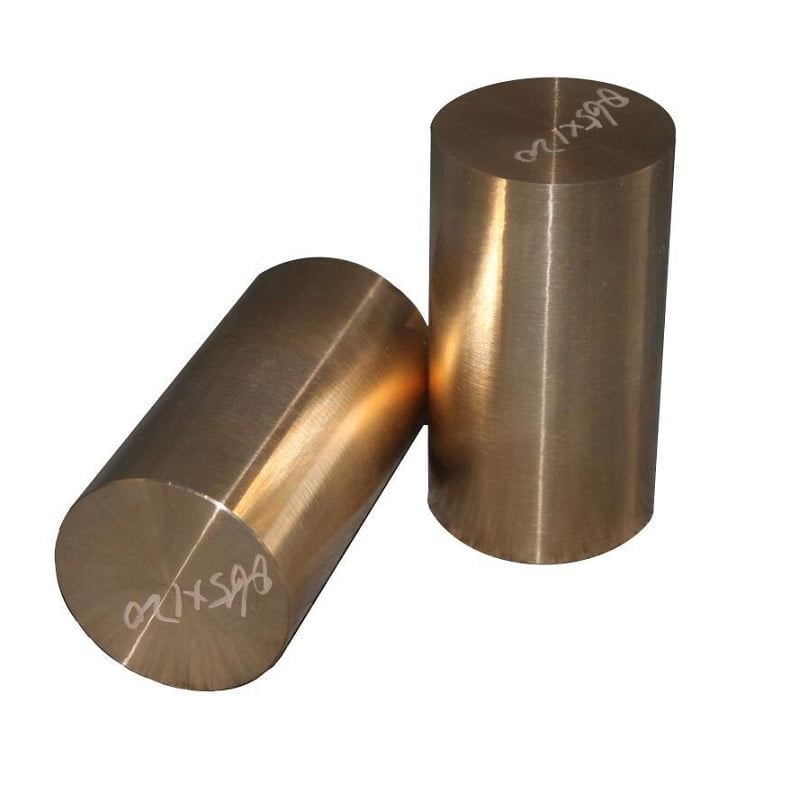تكوين وحساب سعر النحاس البريليوم

سبائك النحاس البريليوم، مثل C17200، يتم تقديرها لمزيجها الفريد من الخصائص، والتي تشمل القوة العالية، والموصلية، ومقاومة التآكل. يتأثر سعر نحاس البريليوم بعدة عوامل، بما في ذلك أسعار السوق الحالية للنحاس والبريليوم، وتكوين السبائك، وعمليات التصنيع، والطلب في السوق. تقدم هذه المقالة لمحة عامة عن تكوين سبائك النحاس البريليوم وتناقش كيفية حساب الأسعار على أساس هذه العوامل.
تكوين سبائك النحاس البريليوم
تتكون سبائك النحاس البريليوم عادة من النحاس باعتباره المعدن الأساسي المخلوط بنسبة صغيرة من البريليوم. يمكن أن يختلف التركيب الدقيق اعتمادًا على درجة السبيكة المحددة والاستخدام المقصود. تكوين البريليوم النحاس C17200، على سبيل المثال، كما يلي:
| عنصر | نسبة مئوية |
|---|---|
| نحاس | 98.1% |
| البريليوم (كن) | 1.9% |
بالإضافة إلى النحاس والبريليوم، قد توجد كميات صغيرة من العناصر الأخرى مثل الكوبالت والنيكل وأحيانًا الحديد لتعزيز خصائص معينة مثل القوة أو مقاومة التآكل. ومع ذلك، فإن النحاس والبريليوم هما العنصران الأساسيان اللذان يحددان خصائص السبيكة.
العوامل المؤثرة على أسعار النحاس البريليوم
- أسعار السوق للنحاس والبريليوم: إن أسعار سلع النحاس والبريليوم في السوق العالمية لها تأثير مباشر على تكلفة سبائك النحاس البريليوم. يمكن أن تتقلب هذه الأسعار بناءً على ديناميكيات العرض والطلب، والعوامل الجيوسياسية، والظروف الاقتصادية.
- تكوين سبائك: درجات مختلفة من سبائك النحاس البريليوم قد يكون لها تركيبات مختلفة لتلبية متطلبات الأداء المحددة. يزيد محتوى البريليوم العالي بشكل عام من قوة السبائك وصلابتها ولكنه يساهم أيضًا في ارتفاع تكاليف المواد.
- عمليات التصنيع: إن عمليات التصنيع التي تدخل في إنتاج سبائك النحاس البريليوم، مثل الصهر والصب والمعالجة الحرارية، تؤثر على تكاليف الإنتاج. قد تتطلب السبائك المعقدة أو الأشكال المتخصصة (مثل القضبان والقضبان والصفائح) خطوات معالجة إضافية تؤثر على السعر النهائي.
- الطلب في السوق والتطبيق: يمكن أن يؤثر الطلب على سبائك النحاس البريليوم في الصناعات (مثل الإلكترونيات والفضاء والسيارات) على الأسعار. قد يؤدي ارتفاع الطلب على درجات أو تطبيقات معينة إلى ارتفاع الأسعار بسبب محدودية العرض أو زيادة تكاليف الإنتاج.
حساب سعر النحاس البريليوم
عادةً ما يتم حساب سعر سبائك النحاس البريليوم بناءً على العوامل التالية:
- أسعار المعادن الأساسية: ابدأ بأسعار السوق الحالية للنحاس والبريليوم، والتي غالبًا ما يتم تحديدها لكل طن متري أو رطل.
- تكوين سبائك: تحديد تركيبة السبائك (على سبيل المثال، النسبة المئوية للنحاس والبريليوم) وضبط حساب السعر وفقًا لذلك. على سبيل المثال، قد يساهم المحتوى العالي من البريليوم في زيادة تكلفة السبيكة.
- تكاليف المعالجة والتصنيع: ضع في اعتبارك التكاليف المرتبطة بعمليات التصنيع، بما في ذلك معالجة المواد والصهر وسبائك السبائك والتشكيل والتشطيب.
- عوامل السوق: عامل ظروف السوق، مثل اضطرابات سلسلة التوريد، والتعريفات الجمركية، وتقلبات العملة، والتي يمكن أن تؤثر على تكاليف المواد الخام والتسعير الإجمالي.
مثال للحساب:
للتوضيح، دعونا نفكر في حساب افتراضي لسعر البريليوم النحاس C17200:
أسعار السوق (حسب الحساب):
- سعر النحاس: 9000 دولار للطن المتري
- سعر البريليوم: 70.000 دولار للطن المتري
تكوين:
- النحاس (النحاس): 98.1%
- البريليوم (كن): 1.9%
حساب:
- احسب مساهمة التكلفة لكل عنصر بناءً على نسبته في السبيكة:
- تكلفة النحاس = 98.1% × 9,000 دولار = 8,829 دولار للطن المتري
- تكلفة البريليوم = 1.9% × 70,000 دولار = 1,330 دولار للطن المتري
إجمالي تكلفة السبائك:
- إجمالي تكلفة السبائك لكل طن متري = تكلفة النحاس + تكلفة البريليوم
- إجمالي تكلفة السبائك = 8,829 دولارًا + 1,330 دولارًا = 10,159 دولارًا للطن المتري
تكاليف إضافية:
- قم بتضمين تكاليف التصنيع الإضافية والنفقات العامة وهوامش الربح لتحديد سعر البيع النهائي بناءً على ظروف السوق ومعايير الصناعة.
خاتمة
يتم تحديد سعر سبائك النحاس البريليوم مثل C17200 من خلال عوامل مختلفة، بما في ذلك تكوين النحاس والبريليوم، وأسعار السوق للمعادن الأساسية، وعمليات التصنيع، والطلب في السوق. يعد فهم هذه العوامل أمرًا ضروريًا لأصحاب المصلحة في الصناعات التي تعتمد على سبائك النحاس البريليوم، مما يوفر نظرة ثاقبة لإدارة التكاليف واستراتيجيات الشراء.
للحصول على تسعير ومشتريات دقيقة، غالبًا ما تتشاور الشركات مع الموردين وخبراء الصناعة للتنقل بين تقلبات السوق وضمان استراتيجيات تسعير تنافسية تتماشى مع احتياجاتهم التشغيلية.
تهدف هذه المقالة إلى توضيح آليات تكوين وتسعير سبائك النحاس البريليوم، وذلك باستخدام جداول واضحة لتعزيز الفهم وتقديم نظرة شاملة لأصحاب المصلحة في الصناعات ذات الصلة.
